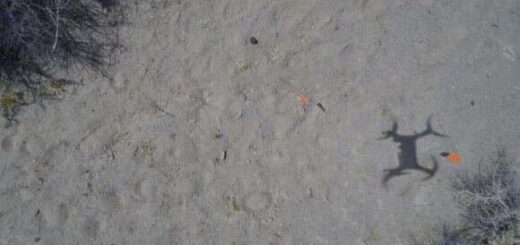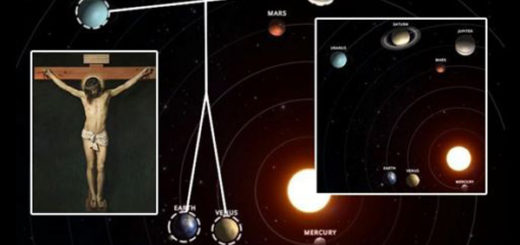Should Earthlings Chase ‘Oumuamua Into Interstellar Space?

IN OCTOBER 2017, an asteroid-hunting telescope in Hawaii detected something unusual. A cigar-shaped object about twice the size of the Eiffel Tower was booking it past Earth at nearly 60,000 miles per hour—and appeared to be accelerating. Known as ‘Oumuamua, a Hawaiian word meaning “scout,” the object had the characteristics of both a comet and an asteroid. Its bizarre features led astronomers to conclude that it was a cosmic interloper: a giant chunk of rock that was formed in another star system and blasted on a journey through interstellar space billions of years ago.
‘Oumuamua was the first interstellar object ever detected in our solar system. For the last three years there’s been a steady stream of research papers hypothesizing about its origin, its chemistry, and even the possibility that it might be an alien spacecraft. The asteroid is rapidly receding into deep space, which makes it difficult to observe using telescopes on Earth. This means that many of the questions about ‘Oumuamua may never be answered—unless, of course, we send a spacecraft to intercept it.
This is the goal of Project Lyra, a mission proposed by a British nonprofit called the Initiative for Interstellar Studies, which funds education and research projects focused on taking us to the stars. The group announced Project Lyra just two weeks after ‘Oumuamua’s discovery and in May, Acta Astronautica will publish the updated version of their proposed mission to chase down the asteroid.
“We now know such a mission, at least in principle, is achievable,” says software developer Adam Hibberd, a volunteer with the initiative who built the software to design Project Lyra’s trajectory. “The possible scientific return would be tremendous and might fundamentally alter our understanding of our place in the universe.”
‘Oumuamua is currently moving away from Earth at nearly twice the speed of Voyager 1, the fastest spacecraft ever built. The asteroid travels about 500 million miles per year—the average distance between the Earth and Jupiter—which means it will enter interstellar space sometime in the late 2030s. To catch up with the asteroid, Project Lyra proposes launching a spacecraft on one of the world’s most powerful rockets—either SpaceX’s Falcon Heavy or NASA’s forthcoming Space Launch System—and using gravity assists from Jupiter and the sun to slingshot the craft toward the asteroid. The spacecraft would be outfitted with a rocket booster that would fire as it whipped around the sun to help bring it up to speed.
4th of July Sale.
Don’t miss the future. Get 1 year for $5.
Subscribe Now
Project Lyra’s new mission proposal suggests launching the spacecraft as soon as 2030. It would intercept ‘Oumuamua around 2049 when the asteroid is about five times farther from the sun than Pluto. For the sake of comparison, Voyager 1, which has gone deeper into interstellar space than any human made object in history, has traveled 15 billion miles in 40 years. The Project Lyra spacecraft would have to travel 20 billion miles in half that time.
“Unfortunately we can’t just launch any year we like,” says Hibberd. “To make missions feasible using current technology, we are reliant on Jupiter taking up a certain point in its 12-year orbit around the sun, and so the opportunities follow approximately a 12-year cycle.”
Marshall Eubanks, the chief scientist at Space Initiatives, a company working on small satellite systems, and a coauthor of the new Project Lyra paper, sees the mission as a stepping stone toward more ambitious interstellar missions. For example, Breakthrough Starshot, an interstellar mission bankrolled by the billionaire Yuri Milner, wants to use giant lasers to send a fleet of thumbnail-sized probes to our closest stellar neighbor, Alpha Centauri. Eubanks says that an interstellar mission to ‘Oumuamua would be “far easier” than travelling to Alpha Centauri. But he acknowledges that the mission would still face a host of challenges, including simply finding ‘Oumuamua in the wilderness of interstellar space.
“There’s a very strong scientific justification for a mission to an interstellar object,” says Eubanks. “The question we’re facing right now is: What’s realistic?”
At this point, any interstellar mission is a longshot that must overcome a host of technical challenges and funding dilemmas. If the goal is simply to visit an interstellar object, we’d probably be better off waiting for them to come to us, rather than chasing them beyond the solar system, says Darryl Seligman, an astrophysics PhD student at Yale University. “Interstellar objects are leftover material from stars and planets that formed somewhere else in the galaxy and they’re being FedEx’d straight to Earth,” says Seligman. “You can’t not take advantage of something like that.”
In 2018, Seligman and his advisor, Yale astronomy professor Gregory Laughlin, authored a paper that showed it’s possible to intercept interstellar objects passing through the inner solar system using currently available rocket and spacecraft technology. Seligman and other astronomers have calculated that the solar system is likely awash in interstellar objects—we’re just not very good at finding them yet. (Indeed, a second interstellar object, 2I/Borisov, was discovered only a year after ‘Oumuamua by an amateur astronomer in Crimea.) Astronomers hope that when the new generation of giant telescopes like Chile’s Large Synoptic Survey Telescope come online we’ll start finding interstellar objects on a regular basis.
Intercepting an interstellar object that is passing near Earth is all about timing. With enough advance warning it’d be relatively easy to launch a spacecraft from Earth with enough speed to intercept an interloping comet or asteroid, a maneuver that Seligman compares to “stepping in front of a bus.” Astronomers detected ‘Oumuamua just before it began its journey out of our solar system, which is way too late to launch an intercept mission. But if we had a spacecraft sitting around ready to go when ‘Oumuamua flew by, Seligman and Laughlin found that we could have paid it a visit.
Last year, the European Space Agency approved the Comet Interceptor mission, which may be the first spacecraft to do a flyby of an interstellar object. In 2028, the Comet Interceptor will be launched to L2, a point in space where the gravitational pull of the Earth and sun cancel each other out. L2 is essentially a parking lot for spacecraft, and the Comet Interceptor will hang out there until it finds a juicy target—either a pristine comet making its first journey into the inner solar system, or an interstellar object.
When the Comet Interceptor approaches its mark, it will split up into three smaller spacecraft. One will keep its distance, taking photos and collecting data about 600 miles from the comet. The other two will plunge toward the comet’s nucleus to sample the gas and dust flying off its surface and measure its magnetic field. The Comet Interceptor will help scientists get a better idea of how our solar system formed by studying a preserved piece of its early history. And if the comet happens to be an interstellar object, it would provide a window into the formation of an alien solar system.
Does that mean a mission to intercept ‘Oumuamua in interstellar space is definitely off the table? Not necessarily. 2I/Borisov looked exactly like what astronomers thought an interstellar object would look like—a normal comet—and Seligman says we can expect interstellar objects in the future to be similar. But ‘Oumuamua is an oddball. As it entered the inner solar system it wasn’t spewing plumes of gas like a comet, it had a bizarre elongated shape, it was tumbling end-over-end, and it was slightly accelerating for no obvious reason. If we discover more interstellar objects and none of them look like ‘Oumuamua, it might be worth chasing the asteroid beyond the solar system to study it as a unique specimen.
Most Popular
Lindsey Graham
SECURITY
The Encryption-Busting EARN IT Act Advances in the Senate
LILY HAY NEWMAN
face mask
GEAR
15 Face Masks We Actually Like to Wear
ADRIENNE SO
Transmission electron micrograph of SARS-CoV-2 virus particles
IDEAS
Covid-19 Is Accelerating Human Transformation—Don’t Waste It
JANE METCALFE
LG TV
GEAR
LG’s CX OLED Is One of the Prettiest TVs of 2020
PARKER HALL
“If we find more objects like ‘Oumuamua, I think the desire to visit that particular object will decline,” says Eubanks. “But if in 10 years its still the only one of its type that we’ve found, I think it will be much more attractive to go there.”
Although the Initiative for Interstellar Studies plans to publish designs for a Project Lyra spacecraft, there’s no indication that it will ever be built. Even if it’s technically feasible on paper, it would cost a lot of money to chase an asteroid beyond the solar system. Advanced spacecraft for interstellar travel have been proposed by independent organizations in the past, but they never came to fruition. Yet now that NASA officials are seriously contemplating interstellar travel, concepts like Project Lyra may stoke the radical thinking needed for a dedicated mission beyond the solar system.
Project Lyra is likely to end up being a thought experiment or a conversation-starter rather than the blueprint for an actual mission. But if Seligman is right, we might not have to chase ‘Oumuamua through the cosmos to get closer to these space oddities. There’s plenty to learn about interstellar visitors passing through our own backyard.



 Creators of mankind
Creators of mankind Description of “Tall white aliens”
Description of “Tall white aliens” Where they came from?
Where they came from? About hostile civilizations
About hostile civilizations The war for the Earth
The war for the Earth “Tall white aliens” about eternal life
“Tall white aliens” about eternal life Video: “Nordic aliens”
Video: “Nordic aliens” Aliens
Aliens Alien encounters
Alien encounters The aliens base
The aliens base UFO
UFO Technology UFO
Technology UFO Underground civilization
Underground civilization Ancient alien artifacts
Ancient alien artifacts Military and UFO
Military and UFO Mysteries and hypotheses
Mysteries and hypotheses Scientific facts
Scientific facts


















